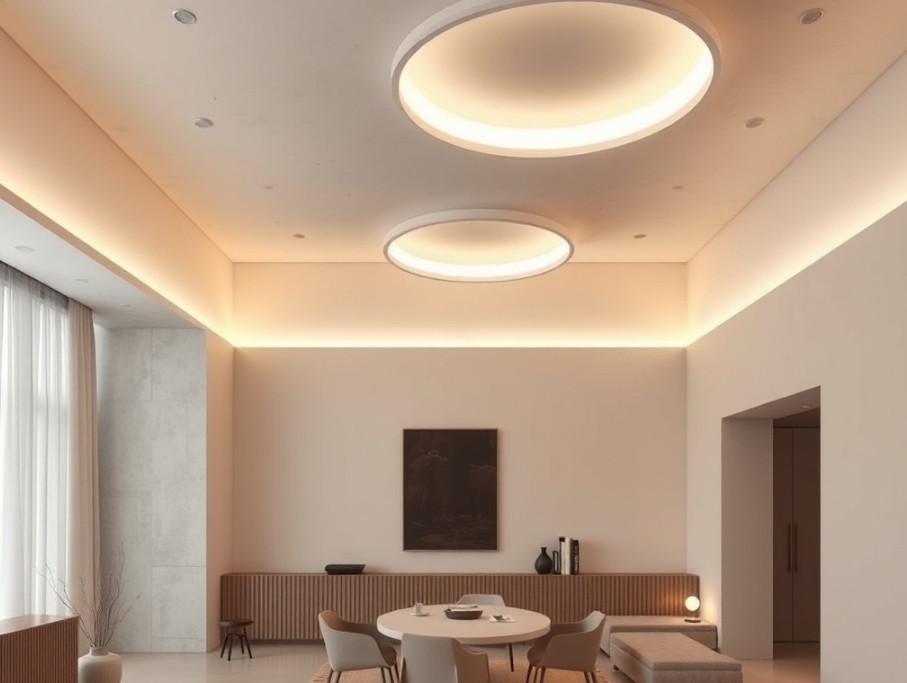Lighting has long been seen as a supporting act in interior design, but it now plays a more central role in shaping how a space looks, feels, and functions. No longer limited to providing illumination, lighting fixtures are being used to sculpt surfaces, create mood, and reinforce the architectural identity of a room. Whether soft and subtle or bold and sculptural, the right lighting transforms more than just the visual environment, it enhances the experience of the space itself.
Designers are increasingly using statement pieces such as Halo lighting to create a layered interplay of brightness, shadow, and form. These circular fittings offer more than aesthetic appeal, they create atmospheric pools of light that add depth and fluidity to interiors. The soft, even glow they produce can highlight specific zones while bringing a sense of calm and cohesion to the entire space.
The Emotional Impact of Light
Lighting does more than illuminate objects, it influences how people feel. Different intensities, temperatures, and angles can completely shift the mood of a room. Warmer tones invite relaxation, while cooler, crisper lighting fosters focus and energy. In both residential and commercial settings, the ability to control and adapt light has a direct impact on comfort and wellbeing.
Fixtures that diffuse light gradually, such as halo-style pendants or wall lights, often create a sense of softness and serenity. This makes them ideal for spaces where people unwind, socialise, or reflect. By avoiding harsh directional lighting and instead promoting ambient layers, these installations support emotional balance and spatial harmony.
Integrating Light with Architectural Features
Good lighting design should complement the layout and structure of a room, not compete with it. Circular fittings, particularly when suspended or flush-mounted, work well in modern interiors that favour clean lines and symmetry. Their shape echoes natural forms, softening hard angles and drawing attention to ceiling height, wall textures, or key furnishings below.
Rather than treating lighting as an afterthought, integrating it into the original design process allows for more effective use of space. For example, placing a halo light over a dining table or reading nook draws the eye and creates a distinct functional zone without needing partitions or clutter. In larger spaces, repeating a visual motif, such as circular lights or mirrored fixtures, can reinforce a sense of rhythm and order.
Light as a Design Tool
Designers often use lighting as a tool to direct attention, manipulate perception, and create contrast. By highlighting focal points like artwork or textured surfaces, well-placed lights can add drama without relying on bold colours or heavy decor. Likewise, soft gradients of light and shade can make a room feel larger, taller, or more intimate depending on placement and intensity.
With technological advances, many modern lighting systems allow full control over colour temperature and brightness. This makes it easier to adapt a space throughout the day or for different purposes. During the day, cooler white light can boost alertness, while in the evening, warmer tones can prepare the mind for rest. A single well-chosen light fitting, such as a halo fixture, can support all these variations without overwhelming the design.
Choosing Fixtures That Balance Form and Function
The success of any interior design scheme often comes down to thoughtful balance. Lighting must meet practical needs while also reflecting the style and character of the space. Fixtures that offer both functionality and sculptural presence provide excellent value, especially in settings where lighting doubles as decor.
By considering how a fixture casts light, how it interacts with surrounding surfaces, and how it contributes to the room’s overall feel, designers and homeowners can make informed choices that go beyond trends. Halo-inspired designs are a strong example of this balance, offering elegance, adaptability, and a unique visual impact that enhances the modern home or workplace.





























